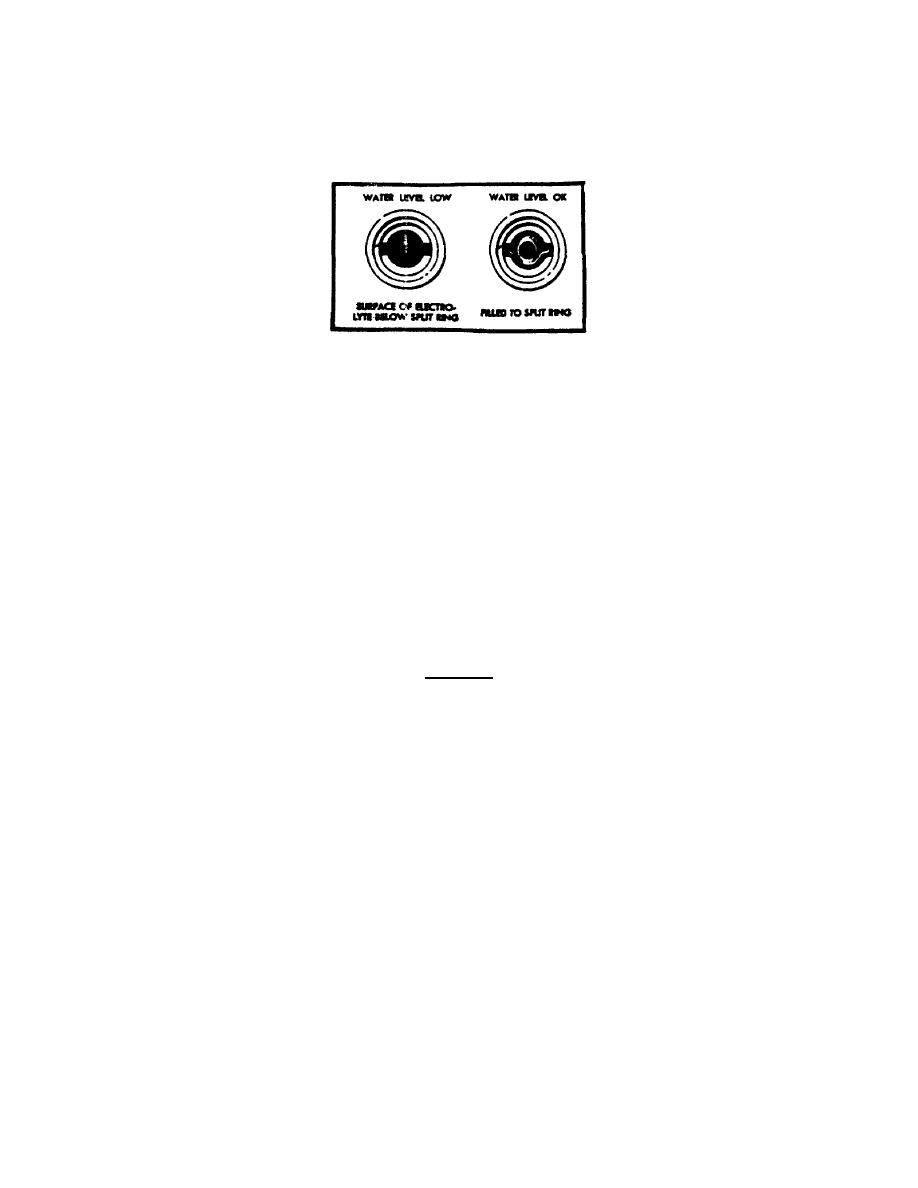
(3) Check the electrolyte level of each cell. At a minimum, the
electrolyte level should cover the cell plates (Figure 23). When adding water
to batteries, the electrolyte level should be brought up to the bottom of the
split ring.
Figure 23. Visual Level Fill.
(4) Charge the batteries. Connect the battery to the charger,
following the equipment manufacturer's recommendations. Observe the polarity
of the battery (connections are made positive to positive and negative to
negative). Specific charging rates will vary, depending on the battery (eight
to ten amperes for 6TN and four to five amperes for 2HN batteries). Leave the
battery caps on and at one hour intervals, check the specific gravity of each
cell. The temperature should not exceed 130 degrees during the charging. If
the temperature is too high, reduce the charging rate. Do not overcharge the
batteries. Overcharged batteries will be damaged internally, shortening their
life. Overcharging is indicated by excessive use of water. Overcharging can
be avoided by removing the battery from the charger when specific gravity
reading remains the same for three successive hourly tests. Add water to the
battery during charging, if it is needed.
CAUTION
During charging, batteries give off highly explosive hydrogen gas. The
charging area must be well ventilated and every precaution must be taken to
prevent sparks that could cause an explosion.
24
OD0611




 Previous Page
Previous Page
